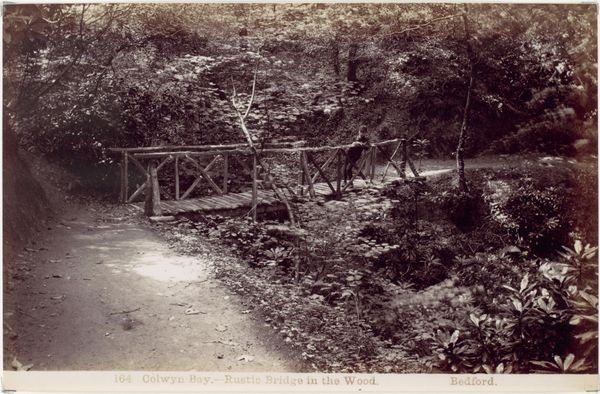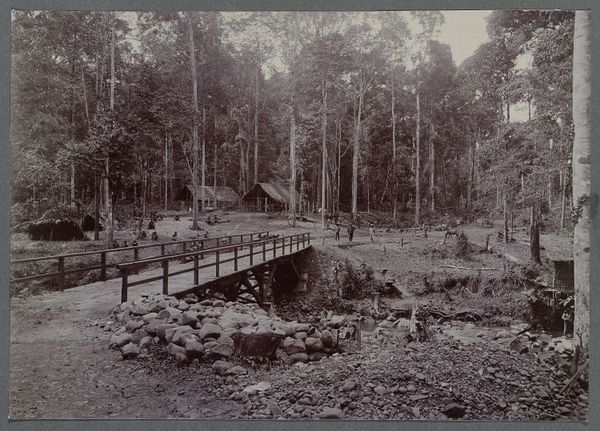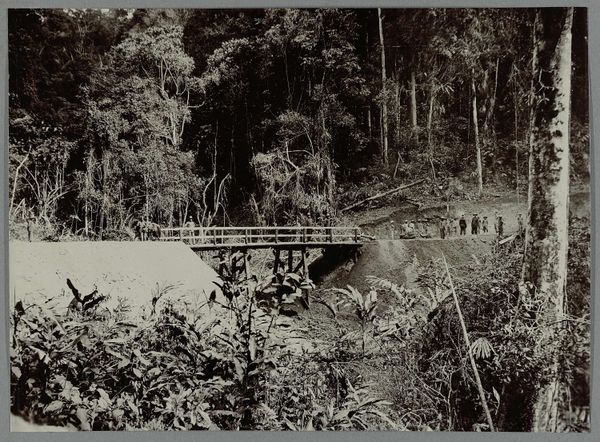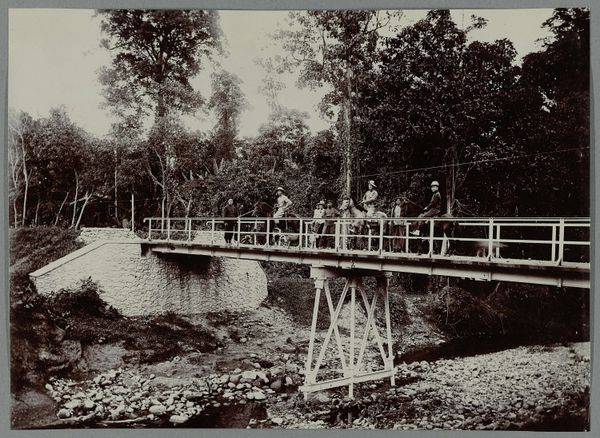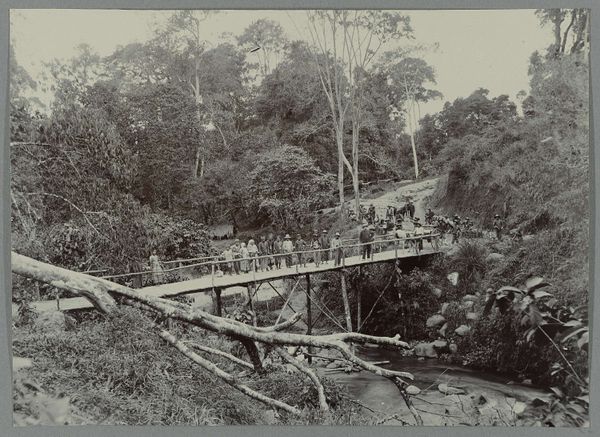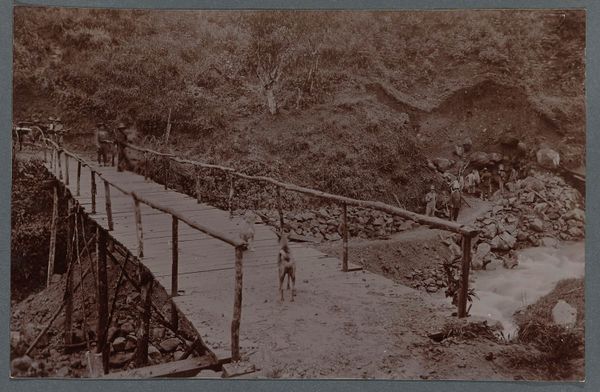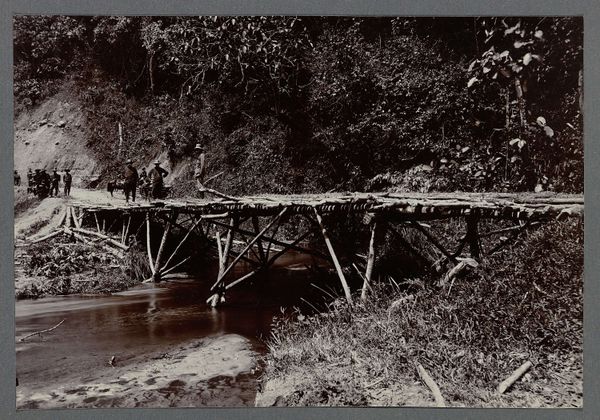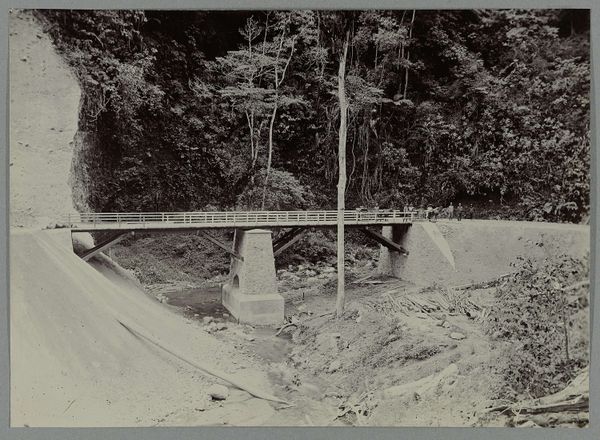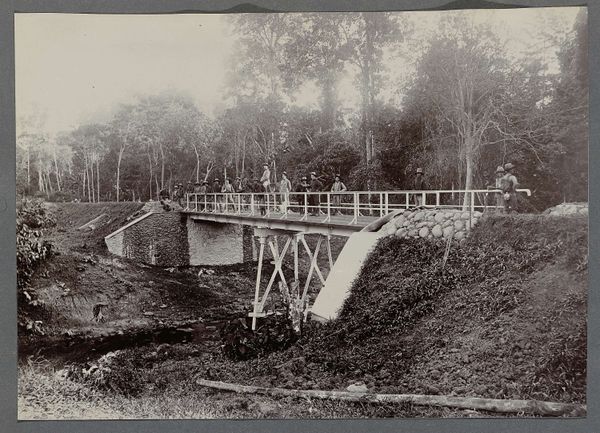
photography
#
landscape
#
photography
#
realism
Dimensions: height 138 mm, width 200 mm
Copyright: Rijks Museum: Open Domain
Curator: The immediate impression is one of subdued exploration, like stepping back in time— the tonality evokes quiet paths and unknown adventures. Editor: Indeed, there’s an anticipatory stillness. This piece is an early photograph, dating from 1903-1913. The title given to this landscape scene is "Brug over de Wenih Rongka" and, unfortunately, the artist has yet to be identified. Curator: It feels like stumbling upon a secret route; that lone rider creates a kind of solitary pilgrimage feeling. Note how they are nearly engulfed by this raw nature. It is a marvel. Editor: Semiotically speaking, the two bridges symbolize passages and their structures define and interact with each plane—foreground, midground and the deep space indicated by the wall ahead. The bridge seems a precarious attempt to engineer and rationalize, however tentatively, nature. Curator: But that’s just it! Engineering _with_ nature! This photograph makes me reflect on how structures either harmonize or disrupt, you know? Like the bridges are a gesture of respectful dialogue across this wild landscape. They are the signposts, in some sense. Editor: Quite so. It also showcases an intersection of technology and the environment in early photographic realism, allowing an objective—as close to possible for the era—record, whilst implying our ability to transform the world. Curator: And while it might be easy to analyze the structural elements in detail here, what strikes me most is how timeless it feels. That pathway leads you straight to something. Whether enlightenment or simply onwards. Editor: True—the orthogonal lines of the bridges converging lend themselves perfectly to suggesting linear perspective in two dimensions—suggesting depth, whilst subtly guiding our gaze along this imagined pathway. Curator: After all, what’s art if not a little direction with our journey? So glad you joined me to appreciate this fleeting capture frozen from way back when. Editor: Agreed—and through this, our analytical journey reminds us there’s much to perceive even in something ostensibly simple.
Comments
No comments
Be the first to comment and join the conversation on the ultimate creative platform.

